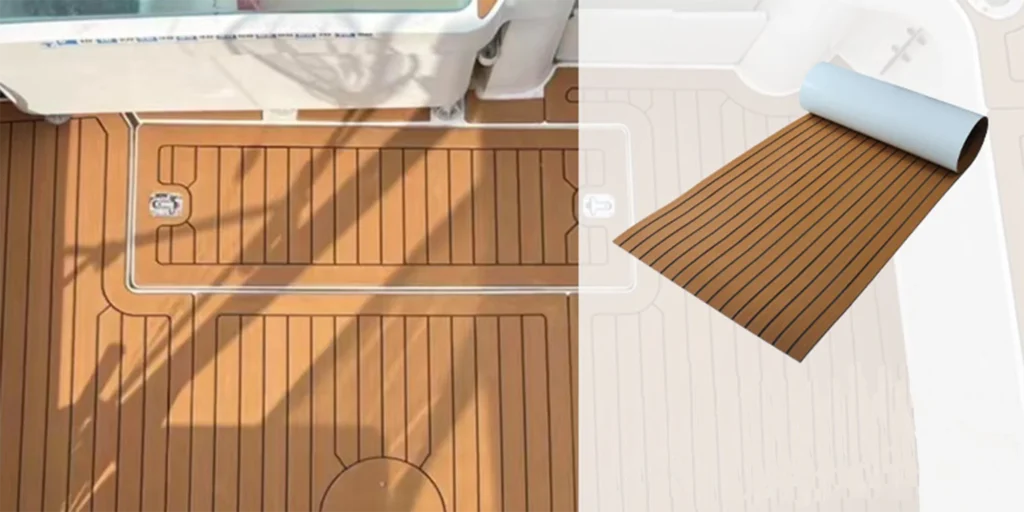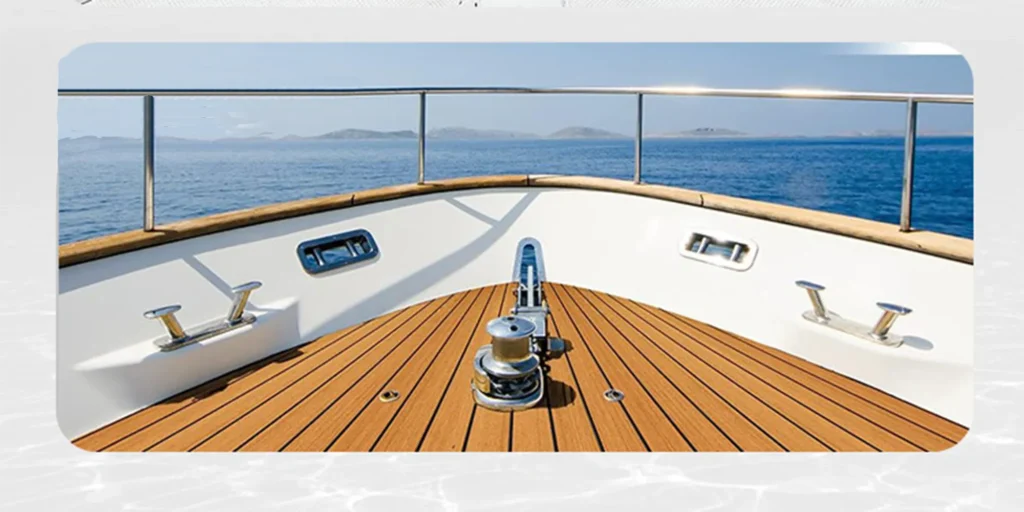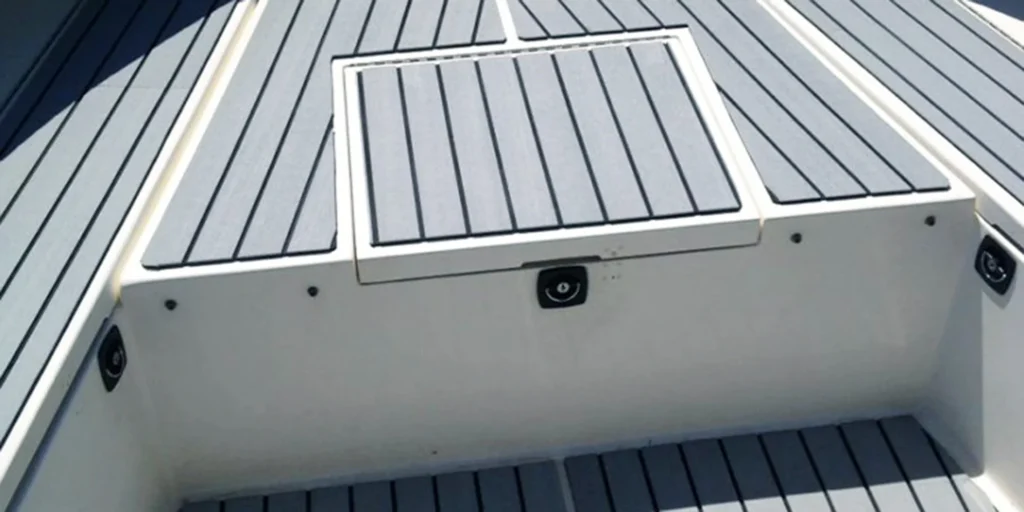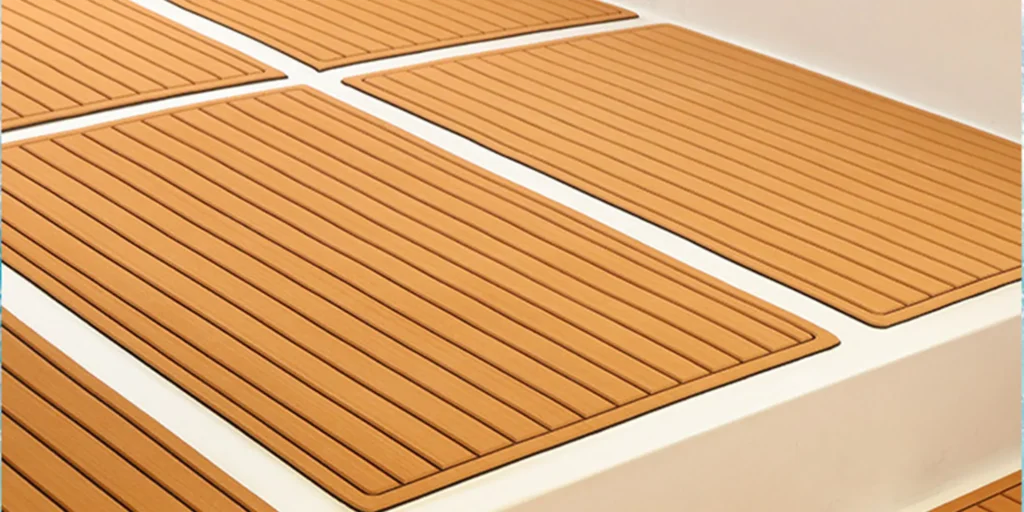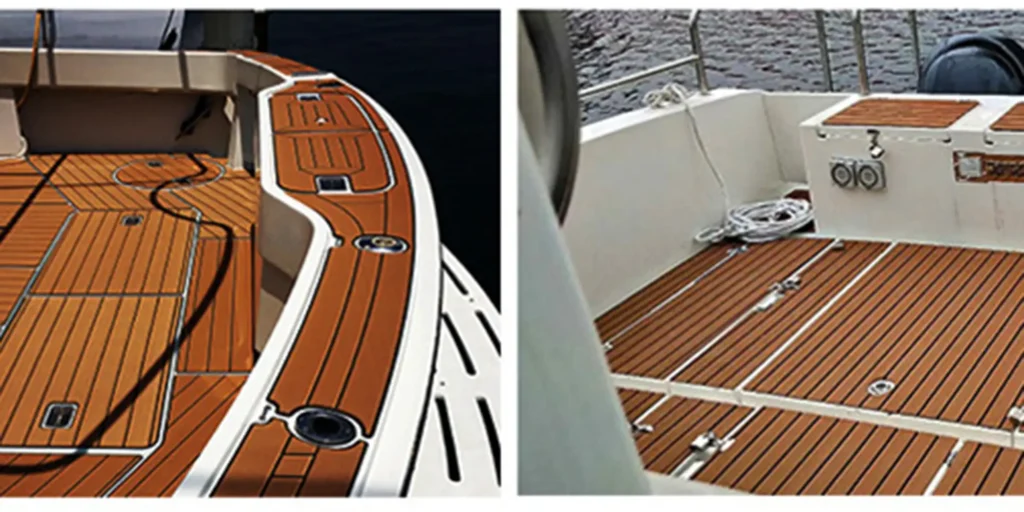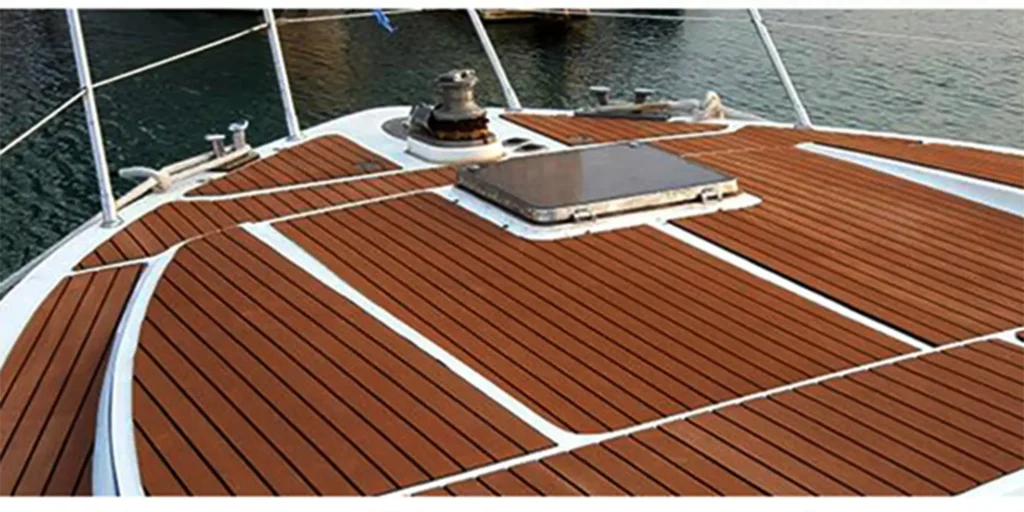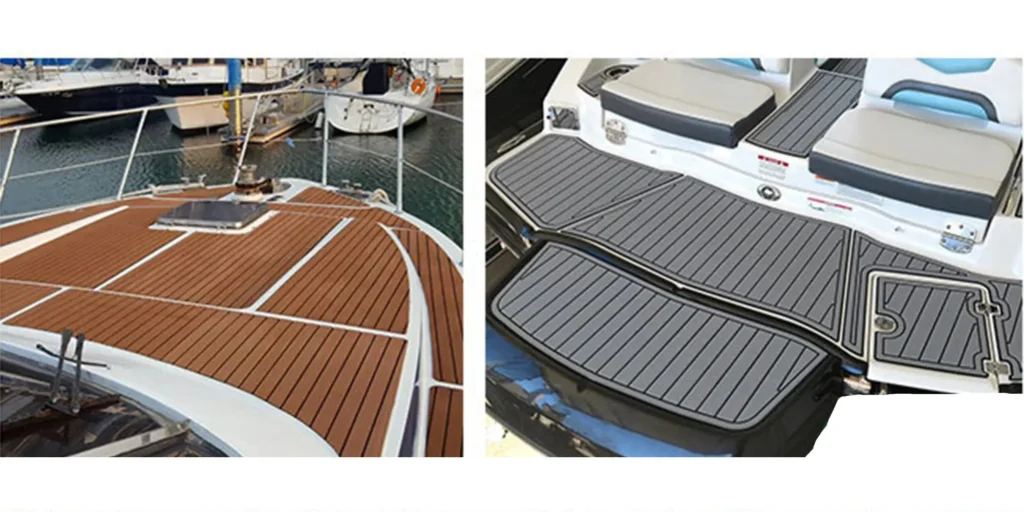When it comes to outfitting your boat, choosing the right flooring material is crucial for comfort, durability, and safety. Among the various options available, EVA foam boat flooring has gained popularity in recent years, offering distinct advantages over traditional flooring options. In this article, we’ll explore the differences between EVA foam flooring and conventional materials like teak, vinyl, and carpet, highlighting the benefits and potential drawbacks of each.
What is EVA Foam Flooring?
EVA (Ethylene Vinyl Acetate) foam is a versatile, closed-cell material known for its softness, flexibility, and resilience. Commonly used in various applications such as sports equipment, toys, and flooring, EVA foam has become a favored choice for boat flooring due to its lightweight properties, excellent shock absorption, and water resistance.
Traditional Flooring Options for Boats
1. Teak Wood
Teak is a classic choice for boat flooring, renowned for its beauty and durability. It offers natural resistance to moisture and decay, making it suitable for marine environments. However, teak flooring requires regular maintenance, including sanding and oiling, to retain its appearance and longevity. Additionally, teak can be expensive and heavy, which may not be ideal for all boat owners.
2. Vinyl Flooring
Vinyl flooring is another common choice for boats, offering a variety of colors and patterns. It is waterproof, easy to clean, and resistant to stains and fading. However, traditional vinyl flooring can become slippery when wet, posing a safety hazard. Moreover, it may not provide the same level of cushioning and comfort as EVA foam.
3. Carpet
Carpet is often favored for its softness and warmth underfoot. It provides excellent traction and comfort, making it a popular choice for larger vessels and yachts. However, carpet is prone to mold and mildew in humid marine environments and requires regular cleaning and maintenance. Its absorbent nature can also lead to lingering odors if not properly cared for.
Benefits of EVA Foam Boat Flooring
1. Superior Comfort and Cushioning
One of the most significant advantages of EVA foam flooring is its comfort. The material provides a cushioned surface that absorbs impact, making it easier on your feet, knees, and back when spending long hours on the boat. This feature is especially beneficial for families or those who frequently entertain guests.
2. Slip Resistance
EVA foam flooring is designed with a textured surface that enhances grip, reducing the risk of slips and falls. This safety feature is crucial in wet marine environments where traditional flooring options, like vinyl and teak, can become dangerously slippery.
3. Water and UV Resistance
EVA foam is inherently water-resistant and does not absorb moisture, preventing issues related to mold and mildew. Additionally, it offers excellent UV resistance, maintaining its color and structural integrity even after prolonged exposure to sunlight.
4. Easy Installation and Maintenance
Installing EVA foam flooring is straightforward, with many products featuring self-adhesive backing or interlocking tiles. This ease of installation means boat owners can often complete the job themselves without the need for professional help. Maintenance is minimal, requiring only occasional cleaning with soap and water to keep the surface looking fresh.
5. Customization Options
EVA foam flooring is available in various colors, patterns, and thicknesses, allowing boat owners to customize their flooring to suit their aesthetic preferences. This versatility makes it an appealing choice for those looking to enhance the overall appearance of their vessel.
Potential Drawbacks of EVA Foam Flooring
While EVA foam boat flooring offers numerous benefits, it is essential to consider a few potential drawbacks:
1. Durability Concerns
Although EVA foam is durable, it may not be as long-lasting as traditional materials like teak or high-quality vinyl. Over time, the foam can wear down, especially in high-traffic areas. However, many manufacturers produce EVA flooring designed specifically for marine use, which can improve durability.
2. Cost Considerations
While EVA foam is generally more affordable than teak, high-quality EVA flooring can still represent a significant investment. Boat owners should weigh the upfront cost against the long-term benefits and potential maintenance savings.
Choosing the right flooring for your boat is crucial for comfort, safety, and aesthetics. EVA foam flooring presents a compelling alternative to traditional options like teak, vinyl, and carpet. Its superior cushioning, slip resistance, water and UV resistance, ease of installation, and customization options make it an excellent choice for boat owners seeking a modern and functional solution. However, it’s essential to consider factors like durability and cost to ensure that you make the best decision for your boating needs.
In summary, when comparing EVA foam boat flooring with traditional flooring options, the advantages of EVA foam often outweigh the drawbacks, providing a comfortable and stylish solution for your vessel. As boating enthusiasts continue to seek innovative and practical solutions, EVA foam flooring stands out as a viable choice in the marine industry.
FAQ
1. What is EVA foam flooring, and how is it different from traditional boat flooring?
EVA foam flooring is a lightweight, cushioned material that offers excellent shock absorption, water resistance, and slip resistance. Unlike traditional flooring options like teak or vinyl, EVA foam requires minimal maintenance and installation is straightforward.
2. Is EVA foam boat flooring durable?
Yes, EVA foam flooring is designed specifically for marine environments, making it resistant to moisture, UV rays, and wear. However, its longevity can vary based on usage, so choosing high-quality EVA products is essential for durability.
3. Can EVA foam flooring be customized?
Absolutely! EVA foam flooring comes in various colors, patterns, and thicknesses, allowing boat owners to personalize their flooring to match their boat’s aesthetics.
4. How do I maintain EVA foam flooring?
Maintaining EVA foam flooring is easy—simply clean it with soap and water to remove dirt and grime. Unlike carpet, it does not absorb moisture, minimizing the risk of mold and mildew.
5. Is EVA foam flooring safe in wet conditions?
Yes, EVA foam flooring features a textured surface that enhances grip, reducing the risk of slips and falls, making it a safe option for boats where water is often present.
#EVAfoam #BoatFlooring #MarineSafety #BoatMaintenance #SustainableBoating #LuxuryBoating #BoatLife #MaritimeInnovation #BoatingEssentials #OutdoorAdventure
WELLE Trade has over 20 years of experience in the production and processing of PE/EVA/TPE foams, so you may want to consult with them if you have any sourcing needs.
